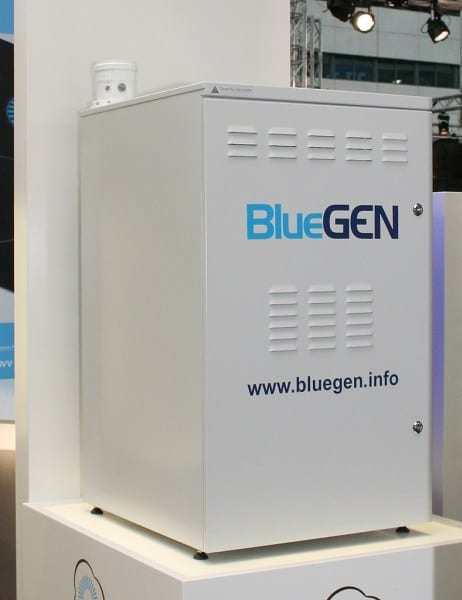
This is a very interesting technology – cost of a small system appears to run in excess of AUS$40k
Australia’s growing population is adding great pressure to the provision – and cost – of electricity. Ceramic Fuel Cells offers a viable alternative solution to rising electricity costs through its gas-to-electricity technology, BlueGen.
Australian governments have signalled they will need to invest at least $100 billion in electricity infrastructure over the next decade in order to meet growing demand for electricity and replace ageing infrastructure. Most of this money will be spent on new power plants, as well as distribution infrastructure to get the electricity from the plants to the places of use – factories, buildings and homes.
What many people do not realise is that a lot of this investment is needed to meet peak demand – typically only several days a year. For instance, 25 percent of the Powercor electricity network is used for less than 150 hours per year.
Over the next five years, the electricity network companies will invest $39 billion on infrastructure upgrades. Almost all of this will be spent on business as usual and only a very small portion – in the order of 1percent for some utilities – will go towards non-network solutions and demand-side management. This is a very inefficient way of allocating resources and will significantly increase power prices for consumers. Household power bills are forecast to double by 2015. Putting a price on carbon will increase electricity prices even further.
Currently, households and small businesses have very limited ability to respond to these price rises: they can try to reduce their electricity usage; switch between energy retailers (which charge similar prices); or install solar panels.
An alternative: ceramic fuel cells
A viable alternative is gathering momentum. Homeowners, small businesses, governments and schools worldwide are installing fuel cell ‘mini power stations’ in their homes and buildings to produce their own electricity from natural gas.
Unlike solar panels, these fuel cells generate power constantly, and the power output can be controlled in response to changes in demand or price.
Ceramic Fuel Cells’ BlueGen gas-to-electricity technology came out of Australia’s CSIRO. Units are operating in Germany, the United Kingdom, Switzerland, The Netherlands, Japan, Italy, Australia and the USA. In Australia, BlueGen units are operating in Melbourne, Sydney, Canberra and Adelaide.
The BlueGen unit, approximately the size of a dishwasher, is an example of distributed generation – generating electricity at the point of use. Crucially, it negates the need for investment in large, centralised power stations and distribution infrastructure.
A BlueGen unit produces approximately twice as much electricity as the average Australian home requires each year. The excess production can be sold to the grid. This means that households change from being electricity buyers to electricity sellers.








